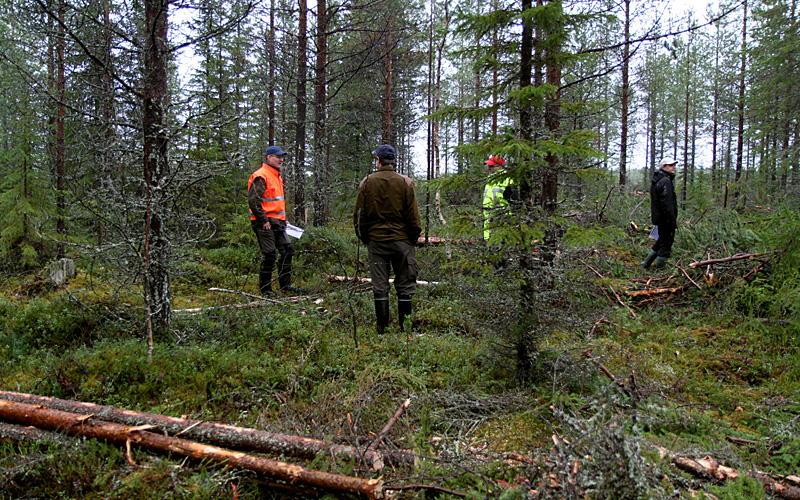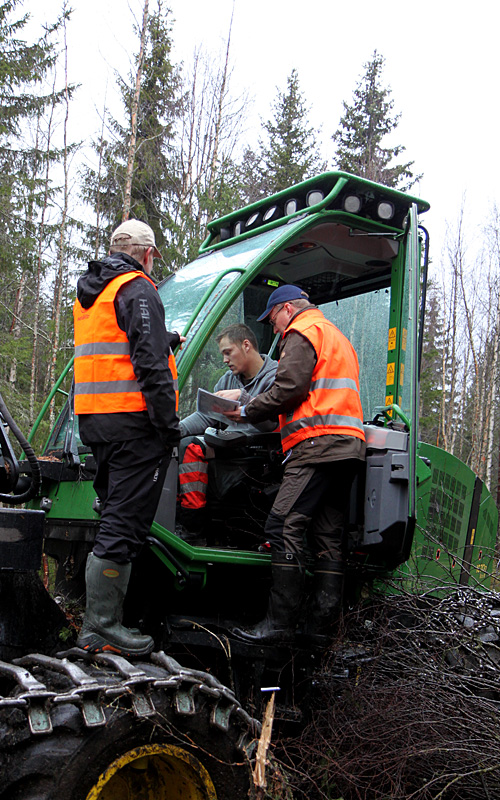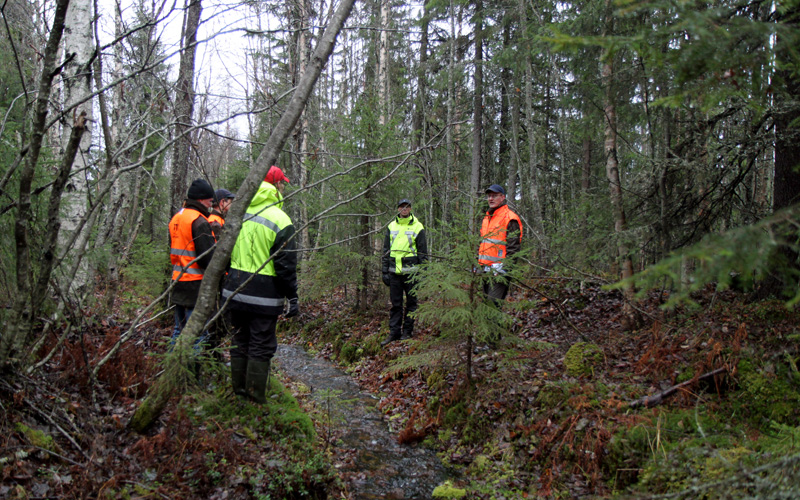Point of view: Forest certification ensures confusion instead of sustainability

Isn’t it high time to reveal the truth about the emperor’s clothes, in order that consumers could make their choices on the basis of genuine sustainability in the use of forests?
Forest certification was started in the early 1990s in tropical forests, following an initiative by the WWF. The initiative was due to the destruction of tropical rainforests that could not be halted by legislation and policy efforts.
Certification was considered to be a market-oriented and effective tool to tackle the problem. It spread to other parts of the world and is now an essential element of international forest policy and the efforts to develop sustainable forestry.
There currently exist two international forest certification systems: the FSC (Forest Stewardship Council), established by the WWF, and the PEFC (Programme for the Endorsement of Forest Certification schemes), the initiative for which was taken by organizations of European family forest owners. They decided to create the PEFC because the FSC, developed for tropical plantations, was not felt to address the challenges and characteristics of small-scale forest ownership.
Since then both certificates have been considerably developed and are in use on all continents. In Sweden, for example, they both cover approximately the same forest area. In Finland, on the other hand, the PEFC covers close to 90 percent of the area of commercial forests, while the FSC only covers six percent.
What is the reason behind a difference of this magnitude? Does this mean that Finnish forestry is unsustainable?
Or, not to mince words, are the stakeholders even interested in sustainability?

Neighbouring countries have different criteria
Both the FSC and the PEFC certificates are based on international criteria defined by the organizations responsible for each system. The criteria are adjusted on the national level in order to take account of local conditions.
However, this has led to significant differences between the standards applied in different countries. Despite being granted by the same organization, two separate certificates do not necessarily guarantee that forestry is sustainable in exactly the same way, even if applied in neighbouring countries or within the same forest vegetation zone.
This can easily be seen in the public PEFC and FSC standards. Finnish and Swedish FSC standards, for example, require that five percent of each certified forest holding must be protected, while the corresponding figure in the Russian Federation is zero. On the other hand, in Sweden and Norway the PEFC requires a biodiversity promotion area of five percent of each certified forest holding, but in Finland this figure is zero.
The general perception of the FSC being more environmentally friendly than the PEFC can also be called into question. For example, the Finnish PEFC standard says that all decayed wood with a minimum diameter of 20 centimetres must be spared, but in the Russian FSC standard the minimum is 30-40 centimetres. This means that under the Russian FSC standard, much less decayed wood will be spared than under the Finnish PEFC – unless the logging is carried out in a forest with extremely stout trees.
Reality does not correspond to theory
Forest certification means different things to different actors. To a consumer, it means the opportunity to support sustainable forestry, to the industry it is a way of proving compliance with sustainability on the market, and to the forest owner, it provides forest management guidelines that help gain acceptance on the market.
Reality does not necessarily correspond to this theoretical view. Consumers base their choices largely on political views and beliefs, while the industry is interested in creating more demand, and the forest owner tries to find a balance between the costs created by customer demands and the added value possibly to be gained on the market.
Ultimately, forest certification is about branding. To a consumer considering ecological sustainability, the FSC, established by the WWF and supported by environmental organizations, often appears stronger and more credible that the PEFC, established by forest owners.
Environmental organizations have also performed much better than the forest sector as regards communicating about forest certification. Yet here, as in many other cases, a recognizable brand does not necessarily equal high quality.
Forest certification should be a guarantee of sustainability. However, with differing standards even between neighbouring countries, there is actually more demand for the brand with a better reputation in terms of sustainability than for the brand which is more sustainable in reality.
In 2014, about half of the FSC-certified forests were in boreal forests. Of them, 37 percent were located in Russia. Of FSC-certified boreal forests outside Canada, the share of Russia is 75 percent.
In view of the criticism on Russian forestry by forest specialists and also some environmental organizations, there are grounds for doubting the FSC as a guarantee of quality in this respect. It is also worth asking how much branded wood of this kind is made available on the world market to satisfy well-intentioned consumers.

Sidelined in their own show
Why has the FSC gained so much more ground in Sweden than in Finland? The reason can hardly be that forestry in Sweden is that much more sustainable.
Perhaps the explanation can be found in the history of forest certification. In Sweden, the environmental organizations were willing to give the forest industry and forest owners a greater role from the very first negotiations than was the case in Finland.
The work to update the Finnish FSC standard is about to start. This is the optimal moment to look for a consensus between all stakeholders.
This is the moment for public debate on the matter. The current situation is not good from the viewpoint of the consumers, nor does it treat forest owners in an equal manner. Both these groups have been sidelined by ENGOs and NGOs, busy pulling all stops just to promote their own systems and definitely not focusing on what is essential.
Above all else, forest certification should give consumers more clout and increase the sustainability of forestry – but we’re a long way away from that.
What is especially problematic is that a certificate does not even reveal the country of origin of the wood to the consumer. Instead, they must rely on the general protection promised by forest certification.
It is time to reveal the truth about the emperor’s clothes, in order to give consumers the power to make their choices on the basis of genuine sustainability.
Correction, 11.11.2016: Finnish FSC standard demands protection of five, not ten percent on each certified forest holding.
The article was previoisly published on the 20th of September, 2016, on the website of the Central Union of Agricultural Producers and Forest Owners (MTK) of Finland.
Safeguarding Finnish forest biodiversity in forest.fi

4 kommenttia “Point of view: Forest certification ensures confusion instead of sustainability” artikkeliin
TNX for the analysis and observations. Well done and a good contribution to a less biased concept of sustainability. In the end it’s not about the labels, but about the goal: Sustainable Forest Management. Labels are only a tool.
You are right, ALTHOUGH opinions differ on why do we have forest certification and what are we able to reach by it. Some say that it is a tool to just prove sustainability, some others that it is a tool to change forestry towards more sustainable level.
It seems a good idea:
* that certification exists
* that a large fraction is certified
* that the requirements are not static
* that systems favor realistic improvements in practices
* that there is a competition between different systems
* some, but not large, room for national variations within a system
* that certification should substantially reduce need of governmental authority interference for individual cases
* that certification systems get support by major environmental and consumer organisations
Where seems to be room for and an additional system, easy to say but difficult to make.
It is also a good idea that there are not wide variation among countries with similar forest within the same system, where seem desirable decreasing among country variation within a system.
Agree. However, about your second point, a large fraction should be certified. There was a discussion some years ago that it should not be large, because certification must make a difference, in order to show what is good and what is bad. If everything is certified, everything is good and that’s it. On the other hand, more than one system makes the difference.
Kirjoita kommentti